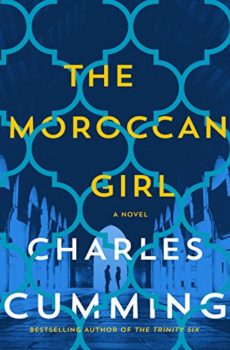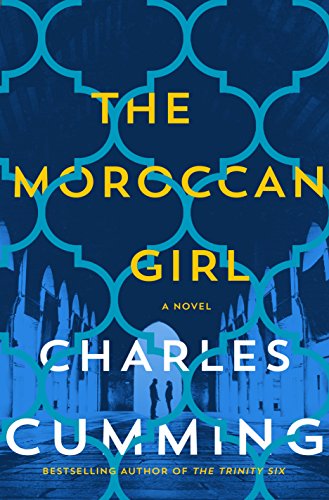
In today’s volatile political climate, both in the United States and in Europe, violence might break out at any time. Certainly, there is ample evidence that nationalist and xenophobic forces on the Right are ready to take up arms. On the Left, too, antifa and other militant anti-fascist groups have demonstrated their willingness to resort to violence. Internationally, too, several states, including Russia, North Korea, Iran, Saudi Arabia, and Israel, have all been engaged in assassinating their political enemies in recent years. And that very real potential for explosive violence forms the backdrop for Charles Cumming‘s excellent new novel of espionage, The Moroccan Girl.
A spy novelist turns to espionage
Christopher (Kit) Carradine is a moderately successful British spy novelist who takes on a job for MI6 when he is approached on the street. He’s scheduled to speak on a panel at a literary festival in Morocco. There, he’s to pass along an envelope full of cash to one agent and deliver a sealed package to another one—if he can find her. That second agent, it turns out, is the “girl” of the title. Lara Bartok is a Hungarian-born activist associated with Resurrection, an anti-fascist network that has veered from nonviolence into kidnapping, assassination, and suicide bombing. However, before she fled the movement, Bartok was involved in a high-profile kidnapping and is now a wanted criminal. Yet Kit’s handler wants him to help her avoid capture by her pursuers.
The Moroccan Girl by Charles Cumming (2019) 360 pages ★★★★☆
The “opiate of secrecy” was a drug to which he became addicted
The assignment makes little sense, but Kit is blinded by the opportunity to experience the life of a spy first-hand. “The particular characteristics of espionage—the absorption in a clandestine role; the opiate of secrecy; the adrenalized fear of being caught—were drugs to which Carradine had very quickly become addicted.” And that may be his undoing. He will soon discover that nothing is as it seems. And that he can take no one at face value.
The “Moroccan Girl” is a wanted criminal
The Moroccan Girl is written in the omniscient third person. The story alternates between Bartok’s statements on the record to a pair of spies and a fast-moving account of Kit’s experience in Morocco. We know she has been on the run for years. She had fled Resurrection and her affair with its founder when the movement turned to violence. Now, as best Kit can determine, both Russian and American agents are out to kill her. The two will, of course, become close in the process—and therein lies the tale. It is, indeed, an exciting one.
For related reading
You can access all my reviews of the author’s books at Charles Cumming’s first-rate spy thrillers.
You might also enjoy my posts:
- The 15 best espionage novels
- Good nonfiction books about espionage
- The best spy novelists writing today
- Top 10 mystery and thriller series
- Top 10 historical mysteries and thrillers
And you can always find my most popular reviews, and the most recent ones, on the Home Page.


























